SERVICES – FINITE ELEMENT ANALYSIS
Finite Element
Analysis (FEA)
What is Finite Element Analysis (FEA)?
Finite element analysis (FEA) is a type of analysis that uses a numerical technique known as the finite element method to determine the response of an object subjected to loading by representing it with an assembly of simple shapes.
The representation of the object is referred to as a model, and the simple shapes making up the model are called elements. Adjacent elements are connected to each other at locations known as nodes and the assembly of elements is referred to as a mesh. The response of an individual element due to an applied load is dependent on the magnitude and type of load, material properties assigned to the element, and the element’s size and shape.
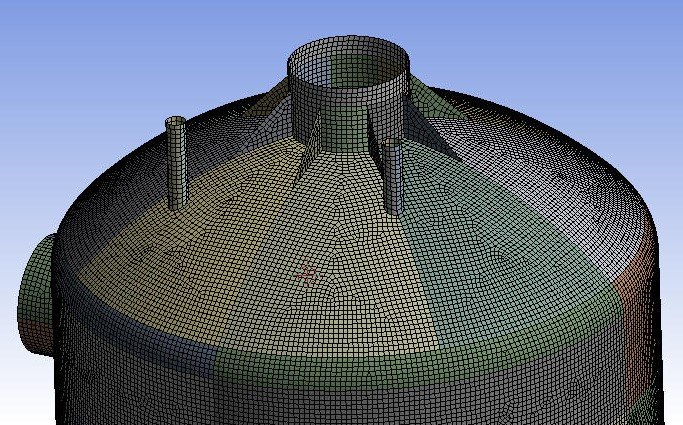
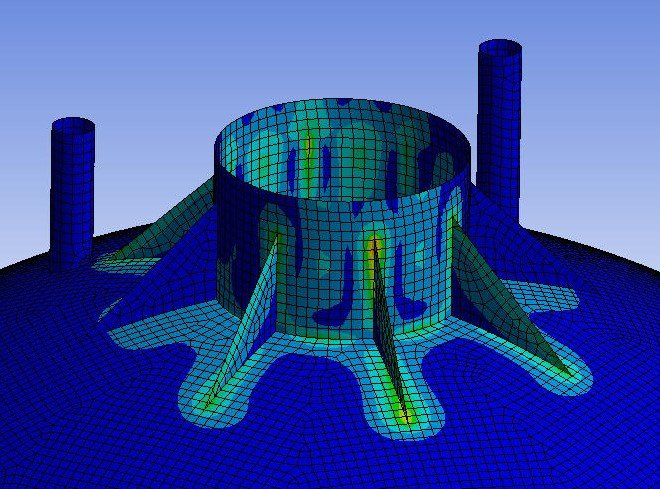
While the response of each element may be different, adjacent elements sharing nodes will have the same response at these locations. The response at each node can be described with a mathematical equation.
In a structural analysis conducted using FEA a mathematical equation will relate the load on the element at that particular node with the stiffness of the element and displacement at the node. Each of these nodes has the ability to translate (and possibly rotate) from its original position. This ability to move is known as a degree of freedom. Each node in a finite element model will have an equation for each degree of freedom. The number of nodes and number of degrees of freedom in an FEA model will determine how many equations the computer has to solve.
Finite element analysis is advantageous in that it can:
- produce an accurate representation of complex geometry
- model complex loading conditions and boundary conditions
- include dissimilar and non-linear material properties
- provide results of the response of the overall structure or component being represented in addition to capturing local effects
The finite element method can be used to analyze a wide variety of products for all types of loads. It can be used to solve problems of structural analysis, heat transfer, electromagnetics, and fluid flow, among others.
Finite Element Analysis (FEA) at Paso Fino Services
At Paso Fino Services LLC we can analyze and evaluate your equipment or component using the appropriate type of Finite Element Analysis (FEA) for the applied loading. We have decades of experience performing a wide variety of mechanical and structural engineering analyses using finite element analysis including:
- elastic stress analyses
- elastic-plastic stress analyses
- limit load analyses
- transient thermal analyses
- buckling evaluations
- fatigue evaluations
- modal (natural frequency) analyses
- harmonic analyses
- random vibration (PSD) analyses
- response spectrum analyses
- transient dynamic (time-history) analyses
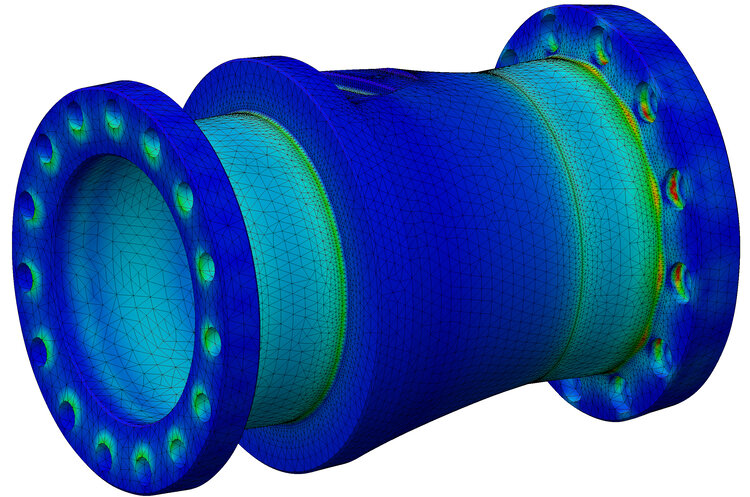
We have extensive experience evaluating equipment and components for a variety of applied loads such as:
- internal pressure
- external pressure
- temperature
- thermal shock
- mechanical shock (impact, deflagration, etc.)
- vibration
- seismic
- wind
- cyclic loads (fatigue)
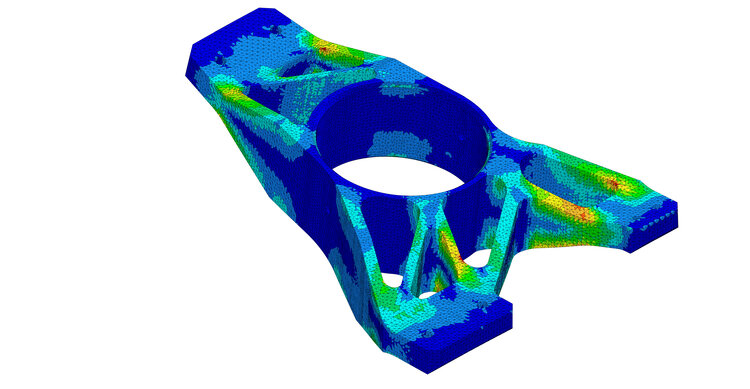
We have successfully analyzed and evaluated a wide variety of equipment and components using finite element analysis including:
- pressure vessels
- vacuum chambers
- heat exchangers
- cryogenic storage tanks
- rotary breakers
- rotary car dumpers
- crankshafts
- filters
- scrubbers
- cyclones
- impellers
- turbines
- pinions
- work chocks
- storage racks
- platforms
- steam heaters
- equipment skids
- equipment supports
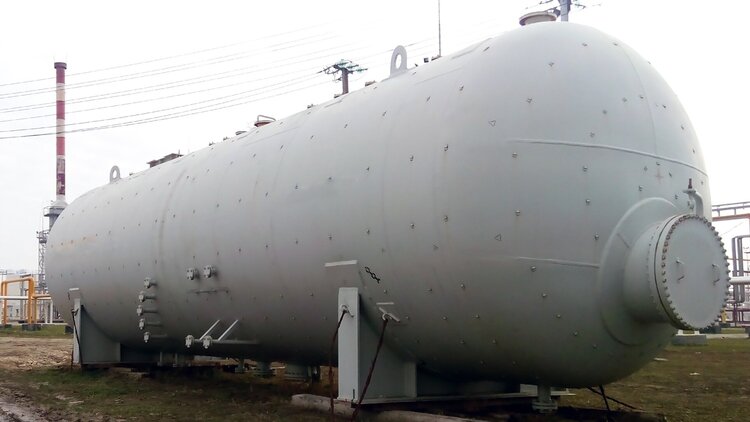
Projects
The following are a few examples of recent projects using finite element analysis that we’ve completed:
THERMAL STRESS ANALYSES AND FATIGUE EVALUATIONS OF A DEEP FRYER
Thermal stress analyses and fatigue evaluations of a deep fryer were performed to assist the manufacturer in determining sheet metal thicknesses, bend radii, and weld sizes. Work included determining stresses, strains, and fatigue damage caused during fabrication, fryer startup/shutdown, and cooking operations. Recommendations were made to reduce stresses and extend the design life of the fryer.
STATIC AND TRANSIENT SHOCK ANALYSES OF A HEAT EXCHANGER SYSTEM
A ship-board system consisting of a heat exchanger, storage tank, electrical cabinet, valves, and piping was analyzed using FEA to ensure the system would pass physical shock and vibration testing. All of the major components and piping were modeled and their structural integrity evaluated. Effects of damping and non-linear stiffness of vibration isolation mounts were included in the analyses to accurately predict the response of the system to shock loading. Initial analyses showed various areas of the system to be overstressed. Based on the response of the system and results of the finite element analyses, design modifications were recommended. Subsequent FEA showed the design modifications resolved the overstresses. The modified heat exchanger system was subjected to physical testing and shown to be acceptable.
MODAL ANALYSIS OF A STRUCTURAL PLATFORM SUPPORTING VIBRATING EQUIPMENT
Multiple large aggregate crushers were to be installed on a multi-story platform. The owner had concerns about large-scale vibrations and the structural integrity of the platform due to the operation of the crushers. Natural frequencies of the platform predicted through finite element analysis were compared to operating speeds of the equipment and shown that these concerns were warranted. Modifications to the platform were recommended based on the FEA results in order to avoid excessive vibration due to resonance. Vibration of the modified platform during operation of the crushers was shown to be within acceptable limits.
SHOCK AND VIBRATION ANALYSES OF VEHICLE MOUNTED EQUIPMENT
Various equipment mounted on a military vehicle were analyzed and evaluated using finite element analysis (FEA) to ensure their structural integrity prior to required physical testing. The equipment and mounting fasteners were evaluated for transient dynamic shock and random vibration (PSD) loading using finite element analysis. Results of the analyses showed multiple components and fasteners having stresses greater than the acceptance criteria. Design modifications were recommended. Subsequent FEA showed the recommended design modifications resolved the overstresses.
FINITE ELEMENT SHOCK AND VIBRATION ANALYSIS AND FATIGUE EVALUATION OF A BLOWER ASSEMBLY
A finite element analysis of a blower and its support structure was performed to ensure its structural integrity prior to required physical testing. Modal analyses and static shock analyses were conducted to determine natural frequencies and areas of significant displacement and stress. A subsequent fatigue evaluation was also performed. Locations for placement of sensors during testing were recommended based on the results of the analysis.
Blog
The following are some of our blog posts related to Finite Element Analysis. For a complete listing of our blog posts see our Blog Page here.
EVALUATING FOR SHOCK AND VIBRATION USING FEA
What are the various types of finite element analyses used to evaluate equipment for shock and vibration loading, how are they different from each other, and when are they typically used? (Read the post here)
THINGS YOU SHOULD KNOW BEFORE YOU START EVALUATING PRESSURE VESSELS USING FEA
If you’re considering evaluating a pressure vessel using finite element analysis (FEA) and haven’t done so before (or are fairly new at it), there are a few things you should know. This article provides some advice for those new to using FEA in evaluating pressure vessels. (Read the post here)
FINITE ELEMENT ANALYSIS OF PRESSURE VESSELS
If you are unfamiliar with the basic steps involved in finite element analysis with respect to pressure vessels this article should help.
UNDERSTANDING A FINITE ELEMENT ANALYSIS (FEA) REPORT
As an ASME pressure vessel fabricator, you may be required from time to time to perform a finite element analysis (FEA) of the vessel. If you are relying on an outside consultant to perform the finite element analysis, you will likely get some kind of a report documenting what was done. So, what can you typically expect in an FEA report and what does it all mean?
Other Services We Provide
To learn more about the other services we provide click on the links below
FINITE ELEMENT ANALYSIS (FEA)
FAILURE INVESTIGATIONS
CONTACT US